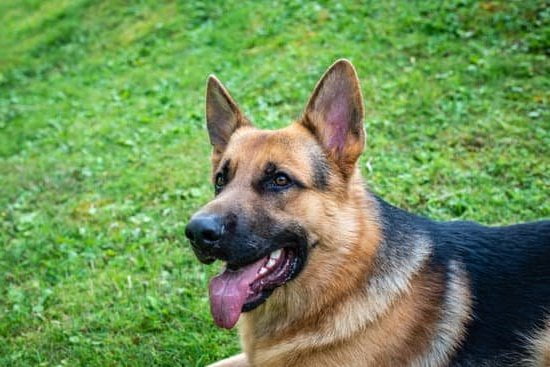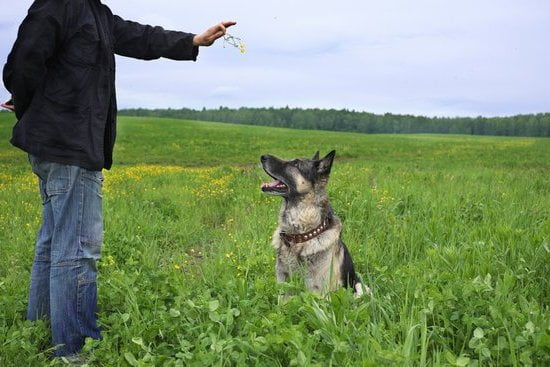Can a dog be trained after showing signs of aggression? Understanding the root of aggression in dogs is crucial in addressing and effectively managing this behavior. Aggression in dogs can be caused by various factors, including fear, territoriality, and frustration. It is important to recognize that aggressive behavior can be modified with the right approach and training techniques.
Identifying the triggers and warning signs of aggression is essential in addressing the issue. By understanding what prompts aggressive behavior in a dog, pet owners can take proactive steps to prevent situations that may lead to outbursts.
Seeking professional help from a qualified dog trainer with experience in dealing with aggressive behavior is highly recommended. A professional trainer can assess the situation, develop a tailored training plan, and provide guidance on how to manage and modify the dog’s aggressive tendencies.
Positive reinforcement training methods play a significant role in rehabilitating an aggressive dog. By rewarding desirable behaviors and redirecting negative ones, pet owners can encourage positive changes in their pet’s behavior.
Implementing behavior modification techniques, creating a safe and structured environment for training, and effectively managing and preventing future aggression are also key aspects to consider when training a dog after it has shown signs of aggression. Ultimately, patience, consistency, and support are crucial elements for successful training after aggression.
Identifying the Triggers and Warning Signs of Aggression
Recognizing Triggers
Aggression in dogs can be triggered by a variety of factors, and it is crucial to identify these triggers in order to address the root of the problem. Common triggers for aggression in dogs include fear, territorial behavior, resource guarding, pain or discomfort, and past traumatic experiences. By recognizing what sets off your dog’s aggressive behavior, you can work towards managing and preventing these triggers in the future.
Warning Signs of Aggression
Before an aggressive outburst occurs, there are often warning signs that a dog may display. These warning signs can include growling, baring teeth, raised fur along the back, stiff body posture, and direct sustained eye contact. It is important for dog owners to become familiar with these warning signs so that they can intervene before the situation escalates into aggression.
Seeking Professional Evaluation
If you are unsure about what triggers your dog’s aggression or if you need help identifying warning signs, seeking professional evaluation from a qualified dog trainer or behaviorist is highly recommended. A professional can conduct a thorough evaluation of your dog’s behavior and provide guidance on how to manage and address the aggression effectively.
Understanding these triggers and warning signs is essential in creating a safe and effective training plan for a dog that has shown signs of aggression. With patience, consistency,and support from a professional trainer,dogs can be trained after showing signs of aggression.
Seeking Professional Help
When dealing with a dog showing signs of aggression, seeking professional help from a qualified dog trainer is crucial. These experts have the knowledge and experience to assess your dog’s behavior and create a personalized training plan to address their aggression. Here are some steps you can take to find a qualified dog trainer:
- Ask for Recommendations: Reach out to friends, family, or your veterinarian for recommendations on reputable dog trainers in your area.
- Research Credentials: Look for trainers who are certified by reputable organizations such as the Certification Council for Professional Dog Trainers (CCPDT) or the Association of Professional Dog Trainers (APDT).
- Meet the Trainer: Schedule a meeting with potential trainers to discuss their training methods, experience with aggressive dogs, and observe how they interact with your dog.
It’s important to remember that not all dog trainers specialize in handling aggression, so be sure to find one who has specific experience in this area. Working with a qualified trainer can make all the difference in successfully training an aggressive dog.
In addition to finding a qualified dog trainer, it’s essential to ensure that they use positive reinforcement training methods when working with aggressive dogs. This approach focuses on rewarding desirable behaviors rather than punishing unwanted behaviors, which can help rebuild trust and improve obedience.
Remember that patience, consistency, and support are key when working with an aggressive dog. With the right professional help and training techniques, it’s possible to positively modify your dog’s behavior and set them up for success in the future.
The Importance of Positive Reinforcement Training Methods
Aggression in dogs can be a complex issue, and it is crucial to address it with the right approach. One of the most important aspects of training a dog after showing signs of aggression is the use of positive reinforcement methods. This involves rewarding good behavior with praise, treats, or toys, rather than punishing or scolding the dog for unwanted behavior.
Understanding Positive Reinforcement
Positive reinforcement training focuses on rewarding the behaviors that we want to see from our dogs. This can include commands such as sitting, staying calm around other animals or people, and exhibiting non-aggressive behavior. When a dog displays these desired behaviors, they are rewarded immediately, reinforcing the idea that this is the type of behavior that is expected and will result in positive outcomes.
The Benefits of Positive Reinforcement
Using positive reinforcement has been shown to be more effective in training dogs compared to punishment-based methods. Not only does it help in reducing aggressive behavior, but it also fosters a strong bond between the owner and their pet. This method creates a more pleasant and enjoyable experience for both the dog and their trainer, leading to better results in addressing aggression.
Seeking Professional Help
Finding a qualified dog trainer who specializes in positive reinforcement methods is essential for effectively addressing aggression in dogs. Professional trainers have expertise in identifying triggers and behaviors that lead to aggression and can develop personalized training plans based on each individual dog’s needs. With their guidance and support, pet owners
Implementing Behavior Modification Techniques
Aggression in dogs can be a complex issue, but it is important to understand that with the right approach, training and behavior modification techniques can help address and improve aggressive behavior in dogs.
To effectively modify a dog’s aggressive behavior, it is crucial to understand the root cause of their aggression. Whether it stems from fear, territorial instincts, or frustration, identifying the underlying reason for their aggression is the first step towards implementing effective behavior modification techniques.
Some effective behavior modification techniques include:
- Counter conditioning: This technique involves changing the dog’s response to a particular trigger by pairing it with something positive. For example, if a dog becomes aggressive around other dogs, they can be trained to associate the presence of other dogs with treats or rewards.
- Desensitization: This technique involves gradually exposing the dog to their triggers in a controlled and safe environment. Over time, as the dog becomes more accustomed to their triggers without displaying signs of aggression, their response can be modified.
- Environmental management: Creating a safe and structured environment for training is essential in managing a dog’s aggressive behavior. This may involve removing or minimizing exposure to triggers and setting clear boundaries within the home.
Implementing these behavior modification techniques requires patience, consistency, and support from both the owner and a qualified dog trainer. With dedication and proper guidance, it is possible to train a dog after showing signs of aggression and improve their behavior for a happier and healthier relationship between pet and owner.
Creating a Safe and Structured Environment for Training
Creating a safe and structured environment is crucial when training a dog that has shown signs of aggression. This type of environment helps the dog feel secure, which can reduce their stress levels and make them more receptive to training. When working with an aggressive dog, it’s important to remove any potential triggers from their environment. This might include keeping them away from other animals or people until they are ready to socialize in a controlled setting.
Additionally, it’s essential to establish clear rules and boundaries for the dog in their training environment. This can be achieved through consistent and fair leadership, as well as providing the dog with a designated space where they feel safe and comfortable. Creating a predictable routine for training sessions can also help the dog understand what is expected of them and reduce any anxiety or uncertainty they may be feeling.
Furthermore, providing the dog with mental and physical stimulation can also contribute to creating a safe and structured environment for training. Engaging in activities such as obedience training, interactive play, and exercise not only helps release pent-up energy in the dog but also strengthens the bond between the owner and the pet.
Finally, it’s important for owners to remain calm during training sessions. Dogs are highly attuned to their owner’s emotions, so maintaining a calm disposition can help alleviate any stress or tension that may be contributing to the dog’s aggressive behavior.
| Training Environment | Description |
|---|---|
| Removing Triggers | Keeping the dog away from potential triggers such as other animals or people. |
| Establishing Clear Rules | Providing consistent leadership and setting boundaries for the dog in their training environment. |
| Mental and Physical Stimulation | Engaging in activities such as obedience training, play, and exercise to provide stimulation for the dog. |
Managing and Preventing Aggressive Behavior in the Future
After a dog has displayed signs of aggression, it is essential to take steps to manage and prevent aggressive behavior in the future. Aggression in dogs can stem from various underlying causes, such as fear, territoriality, or possessiveness. Understanding the root of the aggression is crucial in developing an effective management and prevention plan.
Identifying triggers and warning signs of aggression is an important aspect of managing a dog’s behavior. Once these triggers are recognized, steps can be taken to avoid or minimize exposure to them. It is also important to be mindful of warning signs that may indicate an impending aggressive outburst, such as growling, baring teeth, or a stiff posture.
Seeking professional help from a qualified dog trainer is highly recommended when dealing with a dog that has shown signs of aggression. A professional trainer can assess the situation and provide guidance on implementing behavior modification techniques that can help in managing and preventing aggressive behavior. They can also work with the owner to develop a training plan tailored to the specific needs of the dog.
With patience, consistency, and support, it is possible to successfully train a dog after it has shown signs of aggression. Positive reinforcement training methods should be utilized to encourage good behavior and discourage aggressive tendencies. By creating a safe and structured environment for training, managing triggers, seeking professional help, and implementing behavior modification techniques, owners can effectively manage and prevent aggressive behavior in their dogs.
Patience, Consistency, and Support
In conclusion, while it can be concerning and overwhelming to witness signs of aggression in your dog, it is important to remember that with the right approach and support, training is possible. Understanding the root cause of your dog’s aggression and identifying triggers and warning signs are crucial steps in addressing the issue. Seeking professional help from a qualified dog trainer who specializes in aggression can provide you with the guidance and support needed to effectively train your dog.
Positive reinforcement training methods have been proven to be effective in modifying behavior, and implementing these techniques consistently can lead to positive results. Behavior modification techniques, such as desensitization and counter-conditioning, can also aid in addressing your dog’s aggression. Creating a safe and structured environment for training is essential in ensuring that your dog feels secure during this process.
Managing and preventing aggressive behavior in the future will require ongoing patience, consistency, and support from both you as the owner and any professionals involved in the training process. It is important to remain dedicated to the training program and maintain a supportive environment for your dog. With time, effort, and commitment, it is possible to train a dog after showing signs of aggression.
Frequently Asked Questions
Can You Train Dogs Out of Aggression?
Dogs can be trained out of aggression, but it requires time, patience, and consistency from the owner. It’s important to work with a professional trainer who understands aggressive behavior in dogs and can provide a tailored training plan.
Is It Too Late to Train My Aggressive Dog?
It’s never too late to train an aggressive dog, but it may be more challenging than training a younger dog. With the right approach and dedication, even older dogs can learn new behaviors and responses to replace their aggression.
Can You Change a Dog From Being Aggressive?
Yes, a dog’s aggressive behavior can be changed through proper training and behavior modification techniques. It’s essential to understand the root cause of the aggression and work on addressing it with positive reinforcement, consistency, and patience. With time and effort, significant improvements can be achieved in an aggressive dog’s behavior.

Welcome to the blog! I am a professional dog trainer and have been working with dogs for many years. In this blog, I will be discussing various topics related to dog training, including tips, tricks, and advice. I hope you find this information helpful and informative. Thanks for reading!





